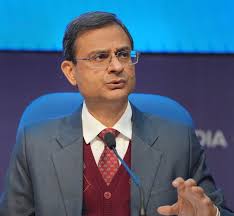NEWS
Expect more rate cuts as RBI lowers growth forecast
RBI cuts repo rate by 25 basis points for second consecutive time; indicates more may come amid global uncertainties following Donald Trump’s sweeping imposition of tariffs.
RBI cuts repo rate by 25 basis points for second consecutive time; indicates more may come amid global uncertainties following Donald Trump’s sweeping imposition of tariffs.

The Reserve Bank of India (RBI) has cut the repo rate by 25 basis points for the second straight time and indicated that more could come amid global uncertainties following US President Donald Trump’s sweeping imposition of tariffs across countries.
There could be another interest rate cut in the next monetary policy in June as the central bank has lowered the GDP growth forecast for 2025-26 to 6.5% from 6.7% earlier while projecting inflation to decline to a comfortable level of 4% from previous prediction of 4.2%.
RBI Governor Sanjay Malhotra stressed that there is more to worry on growth than inflation amid the ongoing global tariff war. “More than inflation, we are concerned about tariff impact on growth," he said during the post-monetary policy press conference.
The growth forecast was lowered primarily because of the tariff-related uncertainties, he added.
While reducing the repo rate to 6% from 6.25%, the RBI-led monetary policy committee (MPC) changed the central bank's monetary stance to 'accomodative' from 'neutral'.
"Our stance provides policy rate guidance without any direct guidance on liquidity management," said the Governor.
"In our context, the stance of monetary policy signals the intended direction of policy rates going forward. Accordingly, with respect to the policy rate, which is the mandate of the MPC, today’s change in stance from ‘neutral’ to ‘accommodative’ means that going forward, absent any shocks, the MPC is considering only two options – status quo or a rate cut," he further said.
The six-member MPC today voted unanimously to cut the repo rate by 25 bps. This will bring down the EMIs of home and auto loan borrowers. Corporate loan borrowers will also stand to gain.
The standing deposit facility (SDF) rate now is 5.75%, and the marginal standing facility (MSF) rate and the bank rate are adjusted to 6.25%.
The current rate-cutting cycle began in February with a quarter-point drop, making it the first since May 2020. The last rate hike occurred in February 2023, with the RBI raising it by 25 basis points to 6.5%.
Inflation to stay in target zone in FY26
Led by good agricultural output and falling crude prices, the RBI has lowered the inflation projection for the current fiscal to 4% against 4.2% earlier.
Malhotra said inflation has declined in January and February 2025 following a significant drop in food prices. Consumer Price Index (CPI) based headline retail inflation declined by a cumulative 1.6 percentage points during January-February 2025, from 5.2% in December 2024 to a low of 3.6% in February.
Unveiling the first bi-monthly monetary policy of financial year 2025-25, Malhotra said the outlook for food inflation has turned decisively positive and inflation is expected to moderate in FY26.
"On the inflation front, while the sharper-than-expected decline in food inflation has given us comfort and confidence, we remain vigilant to the possible risks from global uncertainties and weather disturbances," the governor said.
The uncertainties on rabi crops have abated considerably and the second advance estimates point to a record wheat production and higher output of key pulses over the last year.
Along with robust kharif arrivals, this is expected to set the stage for a durable softening in food inflation, the governor said.
Additionally, the fall in crude oil prices augurs well for the inflation outlook.
On the other hand, there are concerns on lingering global market uncertainties and recurrence of adverse weather-related supply disruptions pose upside risks to the inflation trajectory.
The RBI, taking all these factors into consideration, has put inflation forecast for Q1 at 3.6% (against 4.5% earlier) while for Q2 it is at 3.9% (against 4% earlier), Q3 at 3.8% (same as previous estimates) and Q4 at 4.2% (against 4.4% earlier).
The risks are evenly balanced, said Malhotra.
GDP growth lowered
Amid global concerns regarding Trump’s tariffs, RBI has revised downwards its GDP growth projections for FY26 to 6.5% from 6.7% earlier, with projections for Q1FY26 reduced to 6.5% from 6.7%, for Q2 to 6.7% from 7% and Q4 to 6.3% from 6.5%. For Q3, it slightly raised the GDP growth outlook to 6.6% from 6.5%.
"Growth projection for this fiscal has been marked down by 20 basis points, reflecting global trade and policy uncertainties," Malhotra said.
"The global economy is going through a period of exceptional uncertainties. The difficulty to extract signals from a noisy and uncertain environment poses challenges for policy making….In our context, the growth-inflation trajectory demands monetary policy to be growth supportive, while being watchful on the inflation front. We are aiming for a non-inflationary growth that is built on the foundations of improved demand and supply response and sustained macroeconomic balance," Malhotra he added.
The US has imposed a 26% tariff on Indian exports, effective from today.
CAD to remain within sustainable level
The current account deficit (CAD) for both 2024–25 and 2025–26 is projected to stay well within sustainable levels, supported by resilient external inflows.
"India’s services exports remained resilient in January-February 2025, driven by software, business and transportation services. Going forward, net services and remittance receipts are expected to remain in large surplus, partly offsetting the trade deficit. The CAD (current account deficit) for 2024-25 and 2025-26 are expected to remain well within the sustainable level," said the Governor.
